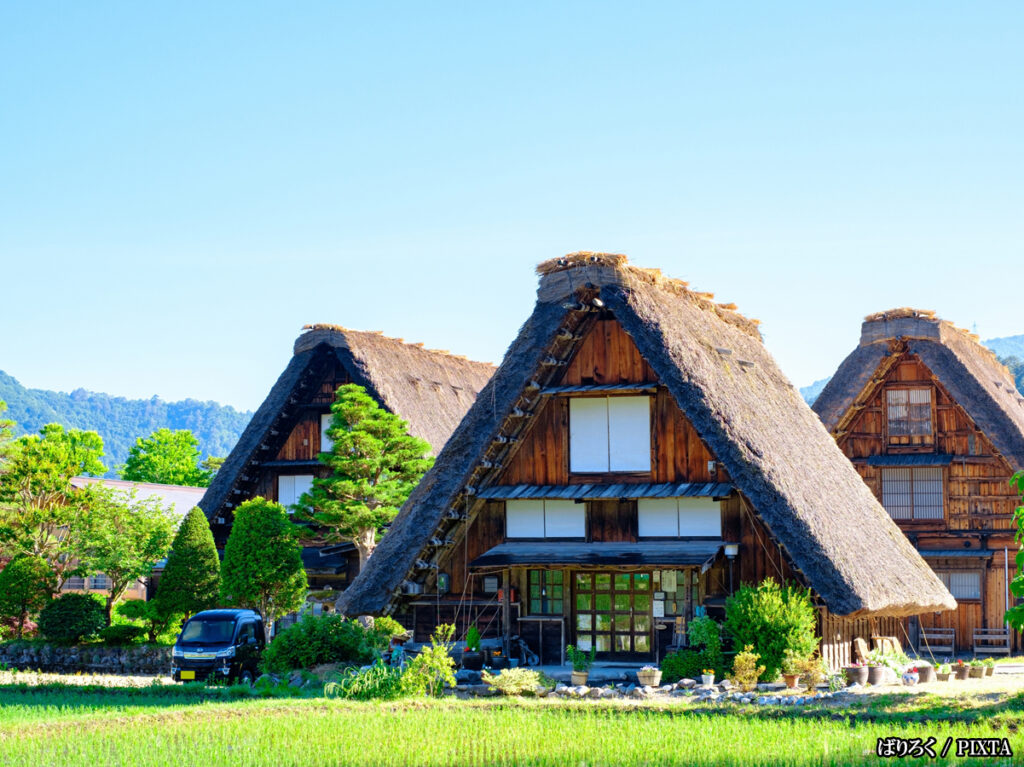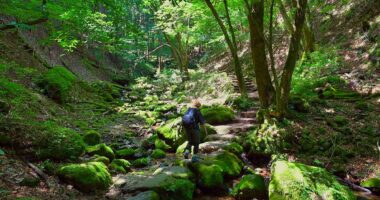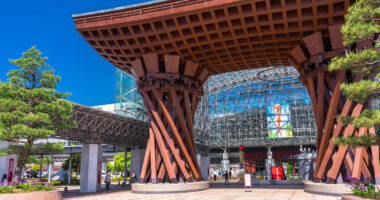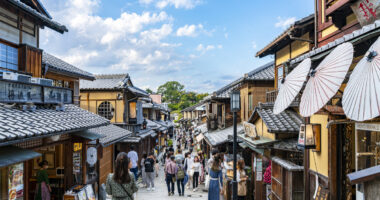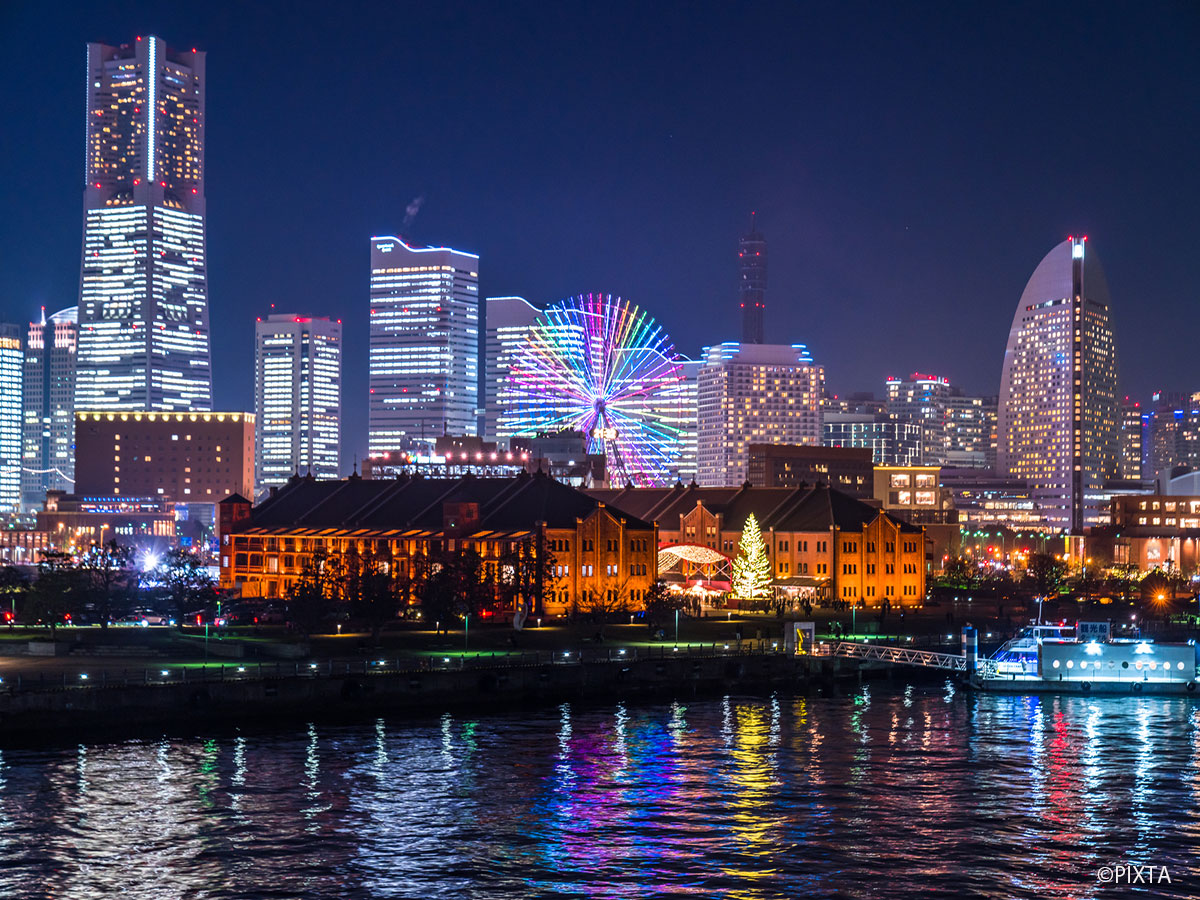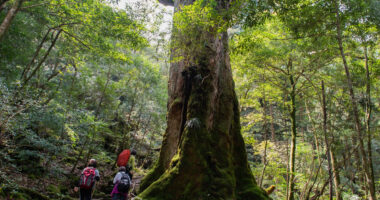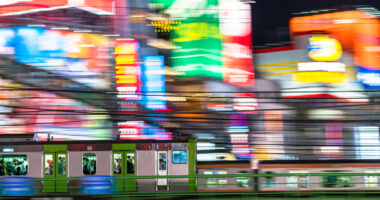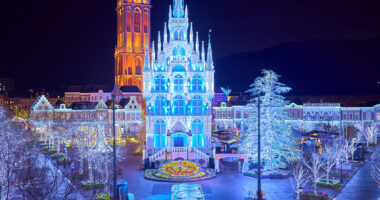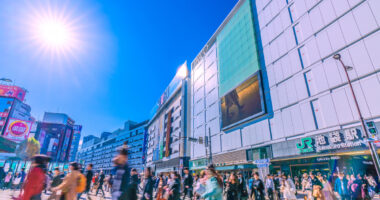Tucked into the mountains of central Japan, Shirakawagō is a rare look at Japan’s countryside as it once was. Forests, rivers, and farmland surround the village. What stands out most are the tall, thatched-roof houses known as gasshō-zukuri. They were built to handle heavy snow and still hold their original form today.
If this is your first time visiting Japan, or if you want to go beyond Tokyo or Osaka, Shirakawago is a place worth seeing. It shows a side of the country that many visitors miss.
- A glimpse into Shirakawago's timeless beauty
- Why Shirakawago became a UNESCO World Heritage site
- What is gassho-zukuri? A snow country design blending wisdom and beauty
- How to reach Shirakawago by highway bus
- A village for all seasons: Shirakawago's year-round beauty
- What makes Shirakawago unique among Japan's rural villages
- Getting around Shirakawago
- Final thoughts: Why Shirakawago should be on your Japan itinerary
A glimpse into Shirakawago’s timeless beauty
Shirakawago is located in Gifu Prefecture, deep in the mountains of central Honshu. The area is quiet, green, and far from the fast pace of Japan’s big cities. It is most famous for its gassho-zukuri homes. These are large wooden farmhouses with steep thatched roofs that rise to a sharp point.
These homes are not just beautiful. They are smart. Each one is built without nails. Designed for harsh winters, their tall thatched roofs reflect generations of adaptation to the environment. Some of the houses have stood for over 250 years.
What makes Shirakawago special is that it is still a real village. People live in these old houses. They farm, they gather wood, they carry on the same routines passed down for generations. This is not a display or a reconstruction. It is a working community that has chosen to keep its traditional way of life.
Walking through Shirakawago does not feel like visiting a tourist site. It feels calm, real, and deeply connected to its past. The reason Shirakawago stays true to its roots is not just the design of the houses but the people who live in them. Shirakawago is still here because the community chose to live with their past, not separate from it.
Why Shirakawago became a UNESCO World Heritage site
In 1995, Shirakawago and nearby Gokayama in Toyama Prefecture were named UNESCO World Heritage Sites—a global designation granted to places of outstanding cultural or natural value to humanity. This recognition was not only for their unique farmhouses but also for the way both villages have protected their traditional lifestyle.
The gassho-zukuri houses stand out for their strong design and deep connection to the local environment. These homes are carefully arranged to make the best use of land and sunlight. People here still grow their own food, share seasonal tasks, and rely on time-tested skills to care for their surroundings.
UNESCO praised Shirakawago for keeping this balance between people and place. The village reflects a complete cultural setting where the land, the homes, and the lifestyle all support one another. In a world that changes quickly, Shirakawago remains steady. It offers a real and lasting example of how tradition can survive without being forced or made into a show.
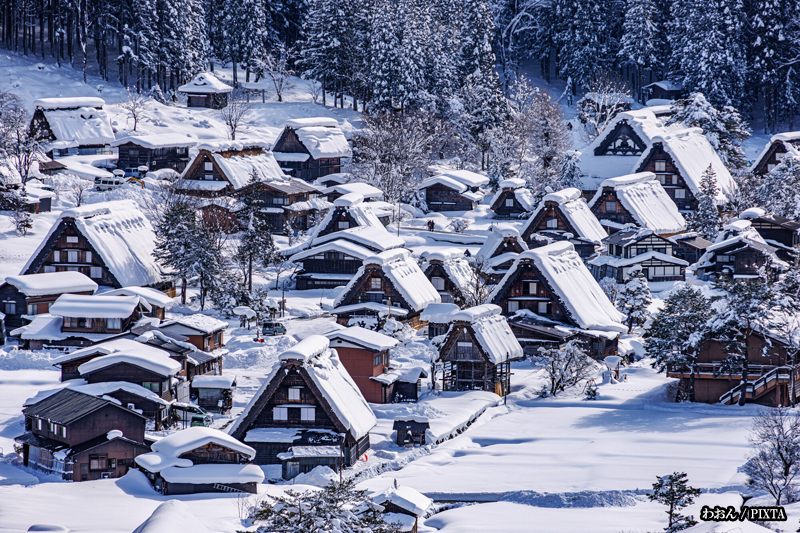
Photo for illustrative purposes
What is gassho-zukuri? A snow country design blending wisdom and beauty
The heart of Shirakawago’s charm lies in the gassho-zukuri houses. The term gashō means “hands in prayer,” describing the sharp A-frame shape of the roofs.
These steeply angled thatched roofs are more than just beautiful. They serve a vital purpose of resisting the heavy snowfall that blankets the region every winter. Snow slides easily off the roof without piling up and causing damage. The homes also have spacious attics, once used for sericulture (silk farming), allowing villagers to raise silkworms during the cold months.
Gassho-zukuri houses rely on wooden joints and thick beams, tied with ropes to maintain structural integrity. Every part of the house reflects generations of wisdom, adapted to survive in a harsh climate while remaining warm and livable.
Many of the existing houses are now open to the public as museums or guesthouses, though a number still serve as private residences. Their interiors, often smoky from the irori (sunken hearth), give a cozy sense of life in old Japan.
How to reach Shirakawago by highway bus
One of the easiest ways to visit Shirakawago is by highway bus, especially for travelers without rental cars. The village doesn’t have a train station, so buses are the primary public transport option. Buses stop at the Shirakawago Bus Terminal, located just a short walk from the village itself. From the terminal, visitors can immediately access the historic zone, scenic lookout points, and several key attractions. The convenience of the bus service makes it a popular choice for those wanting to visit the village without the hassle of navigating remote mountain roads.
Major highway bus routes connect Shirakawago with the following cities:
- From Tokyo: Many bus routes from Tokyo are available. The fastest connects via Takayama, followed by Toyama and Kanazawa.
- From Osaka: Bus routes from Osaka often connect via Takayama or Kanazawa.
- From Kanazawa: This is the most direct and frequent route, taking just under 90 minutes by bus. It’s a great option for travelers already exploring the Hokuriku region.
Though you won’t need a detailed step-by-step guide, it’s good to know that bus reservations are strongly recommended, especially during peak travel seasons like winter and cherry blossom time, when Shirakawago attracts more tourists. Advanced bookings ensure you secure a seat, as buses can fill up quickly during these busy periods.
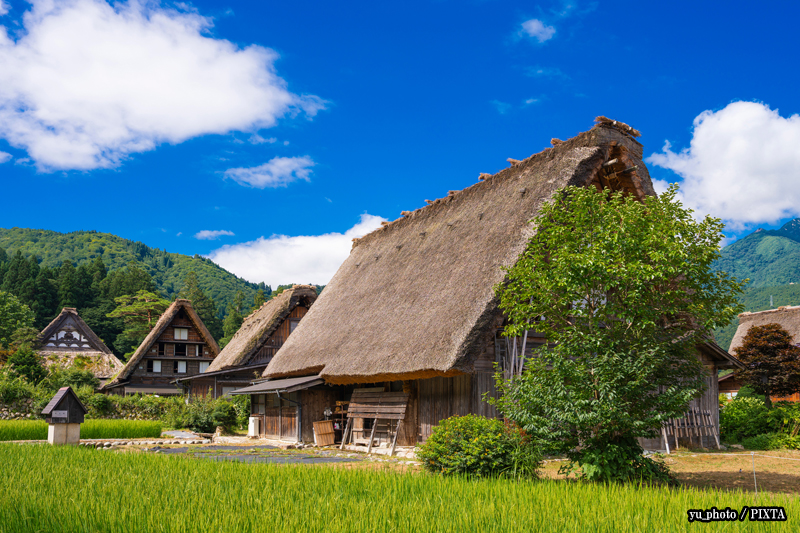
Photo for illustrative purposes
A village for all seasons: Shirakawago’s year-round beauty
Shirakawago is beautiful in every season, but each brings a unique mood and atmosphere that transforms the village entirely. The village’s charm never fades, and each season reveals a different feature of its natural beauty.
Winter: a fairytale world of snow
In winter, the thatched roofs of Shirakawago become crowned with thick layers of powdery snow. The landscape turns into a dreamlike white world, reminiscent of scenes from Studio Ghibli films. This season is especially popular for photographers and those wanting a magical Japanese winter experience.
The snow-covered farmhouses look like they belong to another time, adding to the village’s fairytale atmosphere. Occasionally, night-time illumination events are held, lighting up the snow-covered homes with a warm glow. These views, seen from the Shiroyama Observation Area, have made the village famous on social media. The cold weather adds a peaceful stillness, making it a perfect time to experience Shirakawago’s serene beauty.
Spring and summer: lush and peaceful
As the snow melts, the village reveals lush green rice paddies, blooming cherry blossoms, and trickling mountain streams. Spring brings a sense of renewal, with the vibrant colors of flowers and fresh greenery filling the air. Summer in Shirakawago is vibrant and alive, with the sounds of frogs and insects filling the atmosphere.
This is the best time for hiking nearby hills, wandering the quiet lanes, and enjoying the slower pace of life. The warmer weather makes it easy to explore the area’s peaceful surroundings, and the village’s charm is enhanced by the rich greenery that grows in every corner. The slower pace invites visitors to relax and experience life as the locals do.

Photo for illustrative purposes
Autumn: a symphony of colors
Autumn paints Shirakawago in hues of red, orange, and gold. Maple and ginkgo trees burst into color, making the Gassho-zukuri houses stand out against a backdrop of fiery foliage. The cooler air and colorful landscape make this season ideal for those seeking tranquility and stunning views.
Fall is often less crowded than winter, offering a more relaxed visit with stunning photo opportunities around every corner. The contrast of warm autumn colors against the rustic houses creates a picturesque scene that feels like stepping into a painting. The clear skies and crisp air add a refreshing touch to your experience, making it a wonderful time to visit.
What makes Shirakawago unique among Japan’s rural villages
Japan has many beautiful countryside destinations, but Shirakawago stands apart for several reasons:
Community ownership of heritage
Unlike many preserved towns overseen by government agencies, the people of Shirakawago are directly involved in maintaining their village. Families continue to repair thatched roofs, host cultural events, and care for the shared spaces, treating heritage not as a display, but as a way of life.
Blending function and beauty
From the layout of rice paddies to the design of the steep thatched roofs, everything in Shirakawago serves a purpose while also creating a timeless aesthetic. The balance between utility and visual harmony reflects the deep connection between people and nature that defines rural Japanese life.
Cultural immersion over commercialization
Many countryside towns have become overly commercial. Shirakawago takes a different path. Here, travelers are encouraged to slow down, stay overnight in family-run inns, and experience daily life through cooking, weaving, and seasonal farming activities rather than shopping and fast tours.
Weather-tested legacy
Shirakawago’s architecture has stood strong for centuries in a region known for heavy snowfall and harsh winters. The village is an outstanding example of how humans can adapt to extreme weather using traditional knowledge, proving that resilience and sustainability are timeless qualities.
A place that inspires artists and historians
Shirakawago has long captured the attention of creatives and scholars. Its authentic atmosphere and visual charm inspire painters, writers, photographers, and historians seeking to understand a slower, deeply rooted way of life that modern Japan often leaves behind.
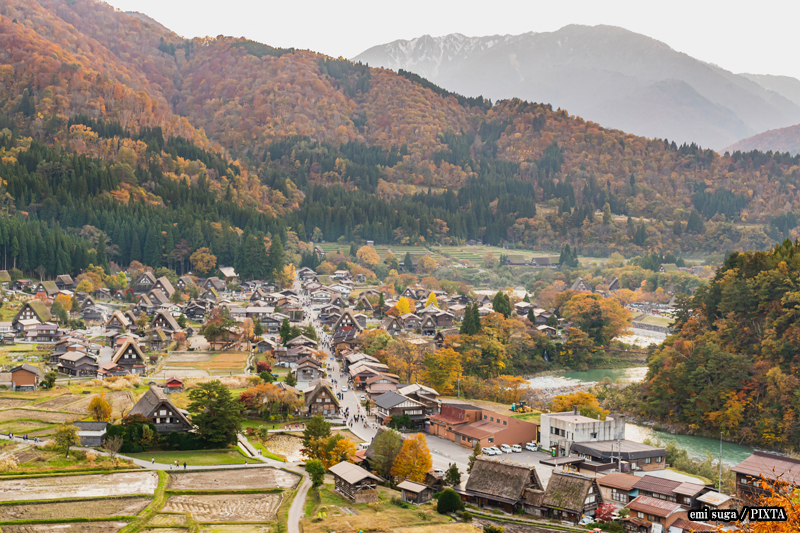
Photo for illustrative purposes
Getting around Shirakawago
Once you arrive at the Shirakawago Bus Terminal, the village is easily walkable. No cars are needed to explore. A leisurely stroll will take you from the riverside fields to the best photo spots, museums, and small temples.
While you won’t need a detailed access map, here are a few accessibility tips:
- Luggage: Storage is available at the bus terminal and visitor center.
- Walking paths: Most areas are flat and paved, though winter snow can make walking slippery.
- Observation area: A short hike or shuttle bus ride takes you to the Shiroyama Observation Area for a panoramic shot of the entire village.
The charm of Shirakawago is in slow travel. There’s no rush here, just take your time and absorb the sights, sounds, and smells of rural Japan.
Final thoughts: Why Shirakawago should be on your Japan itinerary
If you’re planning a trip to Japan and want something beyond skyscrapers, neon lights, and bullet trains, then Shirakawago is your answer. This traditional village offers a soulful connection to old Japan, the kind you can feel in your bones.
The architectural wonders of Shirakawago deliver a timeless charm that stays with the visitors long after they’ve left.
